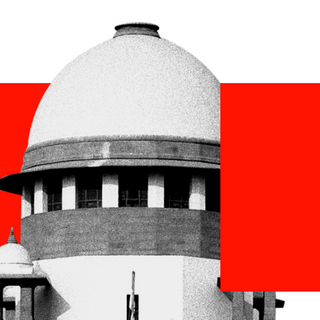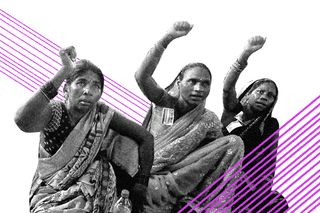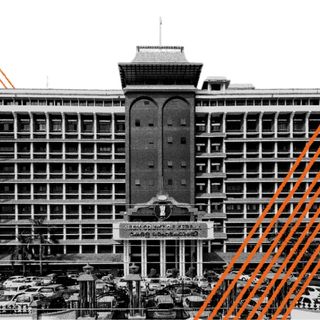
500 Workers Gather in Delhi to Protest Non‑payment of Wages
Over 500 workers are sitting in a three-day protest in Delhi to demand pending payments worth Rs 21850 crore.

Over 500 daily-wage workers from across the country have gathered at Delhi’s Jantar Mantar for a three-day protest against delayed payments and various other concerns related to the implementation of the Mahatma Gandhi National Rural Employment Guarantee Act (MGNREGA). The protest, called by the NREGA Sangharsh Morcha (NSM), a national-level platform of organizations and individuals that deal with the Act, saw the participation of workers from 15 different states of the country.
In 2005, the then-ruling government at the center enacted the National Rural Employment Guarantee Act to ensure citizens’ right to work. In 2009, the government added the name of Mahatma Gandhi to the Act. Under the scheme — often hailed as one of the most successful social security schemes, especially in rural India — at least one adult member of every household is provided a minimum of 100 days of wage employment for manual “unskilled” labor. Further, one-third of all available jobs under the scheme are reserved for women. Moreover, if the Government fails to provide a job to someone within 15 days of their application, then it must pay the worker an unemployment allowance. Over the years, the Act has not only helped a large rural workforce sustain itself but also led to an improvement in rural infrastructure.
Although the pay under the scheme is not particularly high — around ₹200 for a day’s physically laborious work — it has helped workers sustain themselves, and helped them survive crises like the onset of the Covid-19 pandemic. As cities went into lockdown and much of the migrant labor force found itself stranded without any work or pay, workers left for their home villages, where the scheme helped them pay for food and other essentials. The scheme remains an important safeguard against acute poverty and unemployment for a huge population of the country.
Related on The Swaddle:
64% of Rural Indians Cannot Afford a Nutritious Meal: Report
The protest at Jantar Mantar was called to highlight persistent delays in workers’ wage payments, triggered in part by an app to mark attendance that the present government made mandatory earlier this year. The Ministry of Rural Development, in an order dated 13th May, mandated the use of a National Mobile Monitoring System App to record the attendance of workers via capturing their time-stamped and geotagged photographs at the work site. The Ministry stated that the move was introduced to improve transparency. However, workers complained that they were underpaid, with several days’ wages being deducted despite them having worked on those days. Many rural workers, moreover, do not have access to smartphones. The poor network is another barrier that results in an irregular recording of attendance. In May, a ground report from Rajasthan showed how despite the workers marking their attendance on the app, the app failed to register their presence, eventually leading to diminished pay.
“In Delhi, every once in a while, we lose “network” (dropped calls, poor internet connectivity). For us, it is at most a minor annoyance,” Reetika Khera, Associate Professor (Economics) at the department of Humanities and Social Sciences, Indian Institute of Technology, Delhi, tells The Swaddle, commenting on the mandatory attendance through the app. “But to make people’s work and wages contingent on such unreliable technologies is criminal, especially as it is not obvious what problem such applications hope to solve — even if they work. What they end up doing then is to raise the barrier for claiming one’s rights (in this case, employment under NREGA). This is exactly what Virginia Eubanks noted in her book Automating Inequality — the use of technology to knock people off welfare in the name of efficiency or transparency.”
The workers also raised other demands. NewsClick reported that in light of rising inflation, workers asked for the work guarantee to be increased to 200 days, and demanded a raise in the per-day wage to ₹800, at par with the statutory minimum wage for agricultural labor. The workers also highlighted their anxiety about the reduction in the budgetary allocation for the scheme — the allocation for the current year is 25% lower than the previous year — especially at a time when demand for work under the scheme has increased. Protestors further pointed out that much of the current budget allocation would end up only in clearing the pending payments from the previous year. According to a report, payment of wages worth ₹21,850 crores has been pending since April 2020. This year alone, ₹6800 crores in wages are yet to be paid. A reduction in budgetary allocations in such a situation will be severely inadequate to properly compensate the workers.
A large section of the rural population has survived on the provisions of the scheme. It has been able to tide crises and even manage education for children through work provided by the Act. However, rising inflation, an app that runs into glitches, and reduced budgetary allocations now stand to massively reduce the impact the scheme has had on millions of Indians. In a country where a majority of the population resides in rural areas, it is crucial that the state continues to support it through powerful schemes like the MGNREGA, as a matter of social justice.
Amlan Sarkar is a staff writer at TheSwaddle. He writes about the intersection between pop culture and politics. You can reach him on Instagram @amlansarkr.
Related


Friendships Between the Rich, Poor Helped Reduce Poverty, Shows U.S. Study
